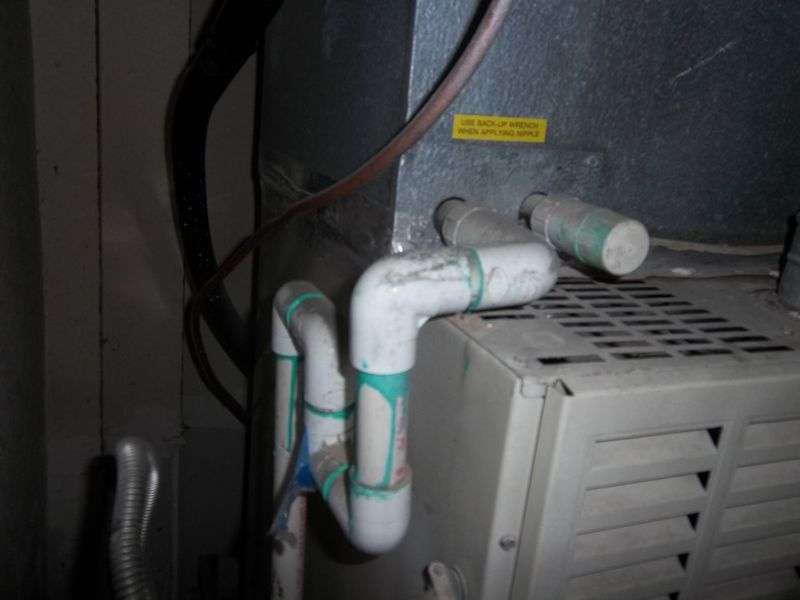I would imagine sewer gases could vent into the air handler.
Condensate into attic sewer vent.
And to clarify that an indirect waste pipe is something upstream of a trap rather than downstream and this includes the main venting stack as well.
Below is a second example of improperly connected air conditioner condensate drain lines to a plumbing vent.
I was adding insulation to my attic recently and noticed that the air handler condensate line was running into my stack vent.
This is causing the condensation.
The trap in the bathroom sink also prevents the sewer gasses from coming into your home and into your air conditioning system.
In older homes condensate lines located in the attic where the evaporator coil is busy removing humidity and cooling the air with refrigerant charged lines are not tied to a home s plumbing system.
This helps ensure that if a backup occurs that the water properly trips the switch instead of overflowing out of the vent.
Is this code compliant.
The condensate line is connected to the house drain vent piping.
This backup condensate system requirement refers for example to an indoor air handler installed in an attic or in living space where leakage into the attic ceiling or onto a floor system could cause damage to the structure.
According to some experts and plumbing codes this is an improper plumbing connection and for some lines there also is no condensate trap in this plumbing arrangement risking possible bacteria or even dangerous sewer gases entering the building air handling system.
Normal condensation in a plumbing vent pipe should stay within the pipe.
The vent opening should always rise above the trip level of the condensate overflow switch when it is in the primary drain line or pan or above the secondary aux overflow port on the primary drain pan.
It doesn t seem correct.
There is a trap but it dries out during the winter.
The pipe is also picking up heat from the central heating.
The air in the attic is a much lower temperature than the hot water running into the soil pipe.

